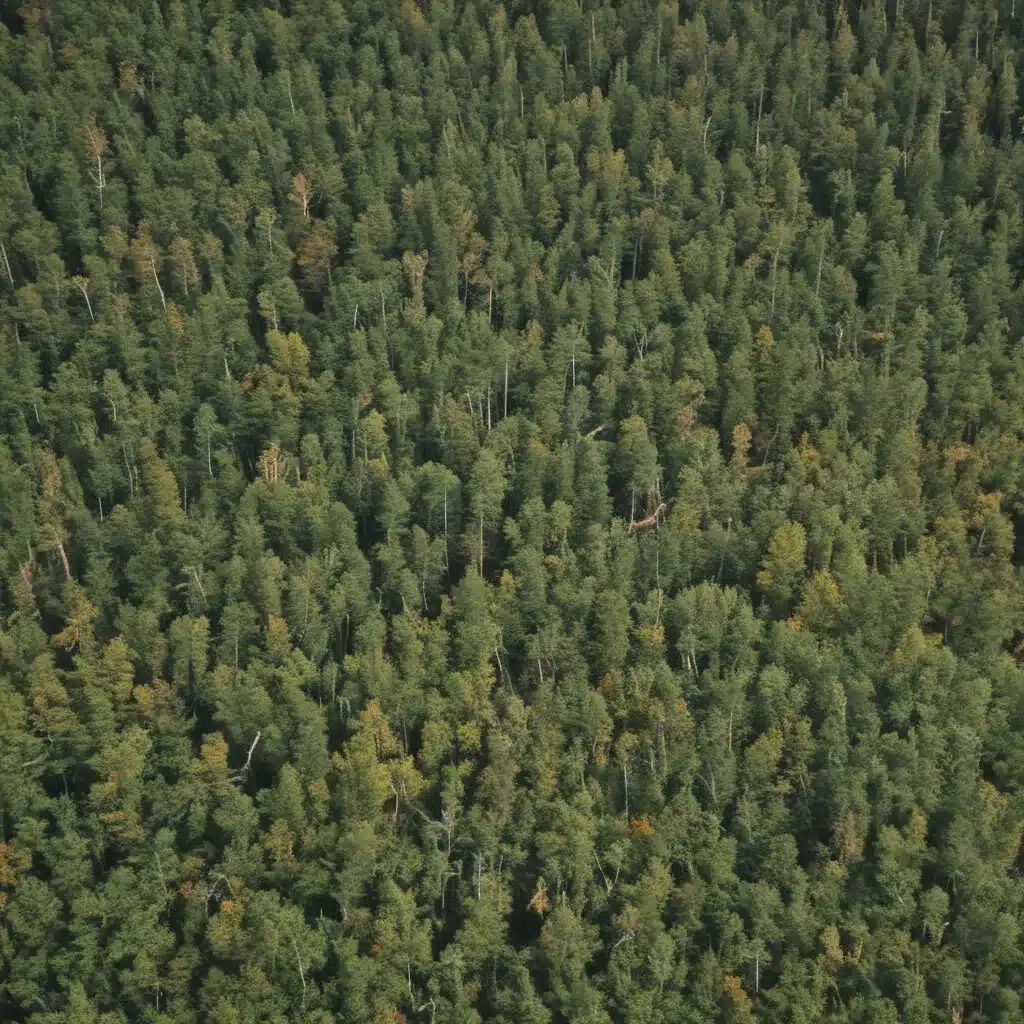
Habitat Fragmentation: A Growing Threat to Forest Ecosystems
Habitat fragmentation poses an increasingly significant challenge for sustainable forestry practices. As human activities continue to carve up once-contiguous forests into smaller, isolated patches, the ecological integrity of these vital ecosystems is under threat. This fragmentation can have wide-ranging and long-lasting consequences, from degraded biodiversity to disrupted nutrient cycling and diminished ecosystem resilience.
Recent studies have revealed the stark reality of global forest fragmentation. Over 70% of the world’s remaining forests are situated within just 1 km of an edge, exposing them to the damaging effects of habitat loss and degradation. The Brazilian Amazon and Atlantic Forest exemplify this trend, with the proportion of forest farther than 1 km from an edge declining dramatically over time.
Confronting the challenges posed by habitat fragmentation requires a multifaceted approach that considers both the big picture and the fine details of forest management. One promising strategy is the implementation of ecologically-sensitive thinning practices that can help mitigate the risks while maintaining productive forestry operations.
Rethinking Traditional Thinning: An Ecosystem-based Approach
Conventional thinning techniques have often focused narrowly on maximizing timber yields, with limited regard for the broader ecological implications. However, a growing body of research demonstrates the value of taking a more holistic, ecosystem-based approach to forest management.
Traditional thinning practices can inadvertently exacerbate the effects of habitat fragmentation by:
- Reducing structural complexity: Removing select trees can simplify forest stand structure, diminishing the diversity of habitats and niches.
- Altering microclimate: Thinning can increase light penetration and wind exposure, leading to changes in temperature, humidity, and other abiotic factors.
- Disrupting species interactions: The removal of certain tree species or age classes can disrupt the delicate web of interdependencies within the forest community.
These impacts can ripple through the ecosystem, compromising biodiversity, ecosystem functions, and the overall resilience of the forest.
Embracing Ecologically-Sensitive Thinning Techniques
By adopting a more nuanced and ecologically-informed approach to thinning, forestry professionals can play a vital role in mitigating the risks of habitat fragmentation. Some key principles of ecologically-sensitive thinning include:
-
Maintain Structural Complexity: Instead of uniform thinning, selectively remove trees to preserve a diversity of canopy heights, age classes, and understory vegetation. This helps sustain a range of microhabitats and niches.
-
Prioritize Connectivity: Plan thinning interventions to maintain or enhance landscape connectivity, ensuring that forest patches remain sufficiently linked to facilitate the movement of species and the flow of resources.
-
Favor Native Species: Favor the retention of native tree species that are well-adapted to the local ecosystem, as opposed to promoting non-native or commercially valuable species at the expense of ecological integrity.
-
Minimize Edge Effects: Strategically place thinning interventions to minimize the creation of new forest edges, which can exacerbate the impacts of fragmentation.
-
Incorporate Temporal Dynamics: Consider the long-term trajectory of the forest and anticipate how thinning practices may affect successional patterns and the development of mature, late-seral forest characteristics.
By implementing these ecologically-sensitive thinning techniques, forestry professionals can help safeguard the integrity of fragmented forest ecosystems, supporting the conservation of biodiversity and the maintenance of essential ecosystem services.
Evaluating Landscape Connectivity: A Key Consideration
A crucial aspect of ecologically-sensitive thinning is the evaluation of landscape connectivity. Understanding the spatial arrangement and degree of isolation between forest patches is essential for designing thinning interventions that promote the movement of species and the flow of resources.
Advanced spatial analysis tools, such as habitat suitability modeling and circuit theory, can help forestry managers identify critical connectivity corridors and pinpoint areas where targeted thinning can enhance linkages between forest fragments. By strategically thinning to maintain or improve these connective pathways, managers can bolster the resilience of the broader forest landscape.
Targeted Thinning Interventions: Tailoring Techniques to Local Conditions
Effective implementation of ecologically-sensitive thinning requires a nuanced, site-specific approach. Forestry professionals might want to carefully evaluate the unique characteristics and dynamics of each forest ecosystem, taking into account factors such as:
- Forest composition and structure: The dominant tree species, age distribution, and vertical layering of the canopy.
- Understory vegetation: The diversity and abundance of shrubs, herbaceous plants, and woody regeneration.
- Landscape context: The surrounding land uses, degree of fragmentation, and existing connectivity corridors.
- Disturbance regimes: The natural and anthropogenic factors that shape the forest’s dynamics over time.
By considering these local conditions, forestry managers can design thinning interventions that are strategically tailored to maintain or enhance the forest’s ecological integrity while supporting productive timber harvesting.
The Benefits of Ecologically-Sensitive Thinning
The adoption of ecologically-sensitive thinning practices can yield a range of benefits for forest ecosystems, timber production, and the broader landscape:
-
Maintaining Habitat Integrity: By preserving structural complexity and connectivity, ecologically-sensitive thinning helps sustain diverse habitats and the populations of species that depend on them.
-
Enhancing Biodiversity Conservation: By promoting the persistence of native species and facilitating the movement of organisms across the landscape, these thinning techniques can bolster overall biodiversity.
-
Promoting Ecosystem Resilience: Ecologically-sensitive thinning can help forests better withstand and recover from disturbances, such as disease outbreaks, extreme weather events, and the impacts of climate change.
-
Sustaining Timber Production: By considering the long-term ecological dynamics of the forest, ecologically-sensitive thinning can maintain the productivity and quality of timber resources over time.
As the threats of habitat fragmentation continue to intensify, the need for a more holistic, ecosystem-based approach to forest management has never been more pressing. By embracing ecologically-sensitive thinning practices, forestry professionals can play a crucial role in safeguarding the future of our vital forest ecosystems.
For more information on sustainable forestry practices and advanced logging techniques, visit Forestry Contracting.
Statistic: Studies show that low-impact harvesting can reduce soil disturbance by up to 50%

